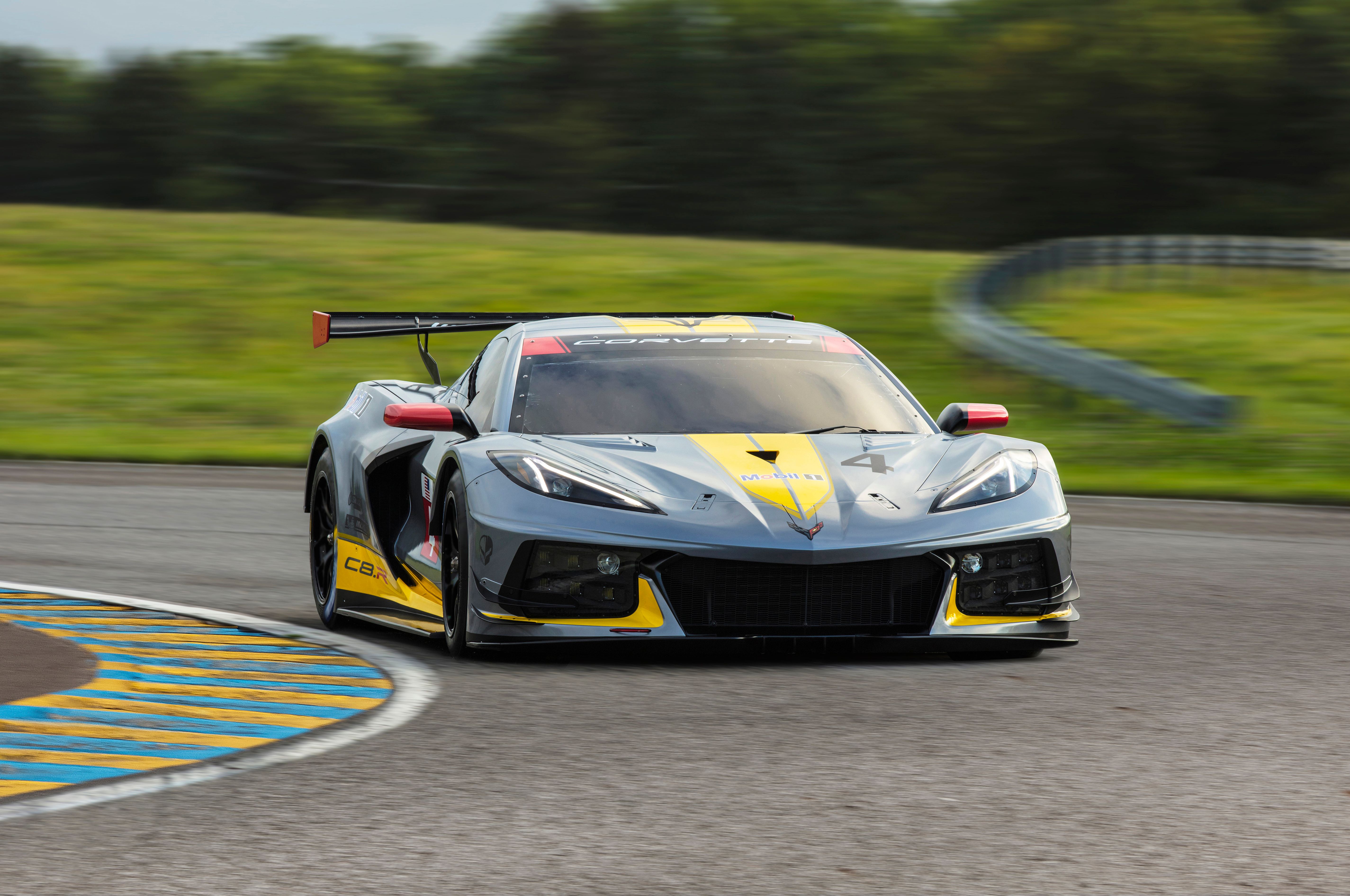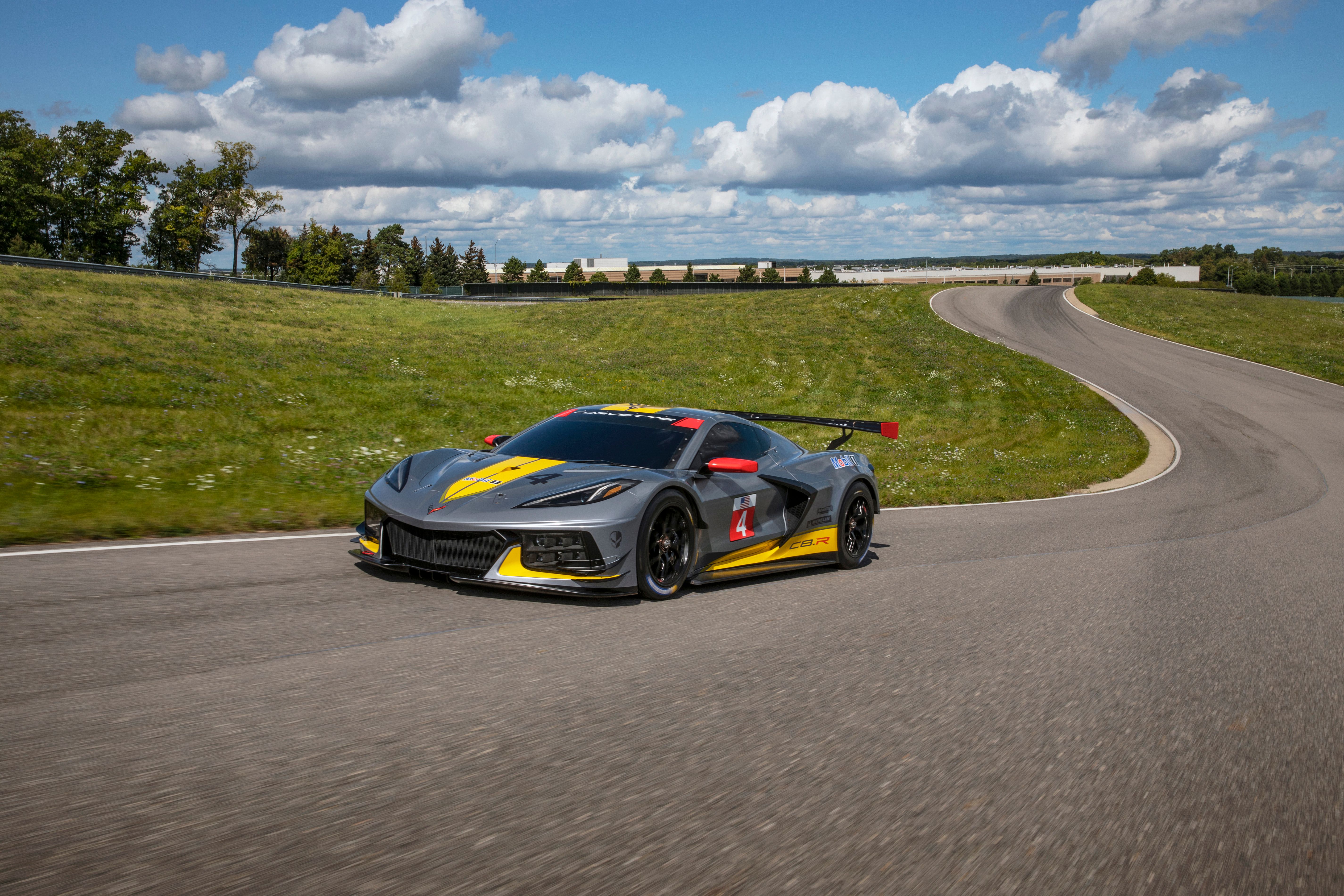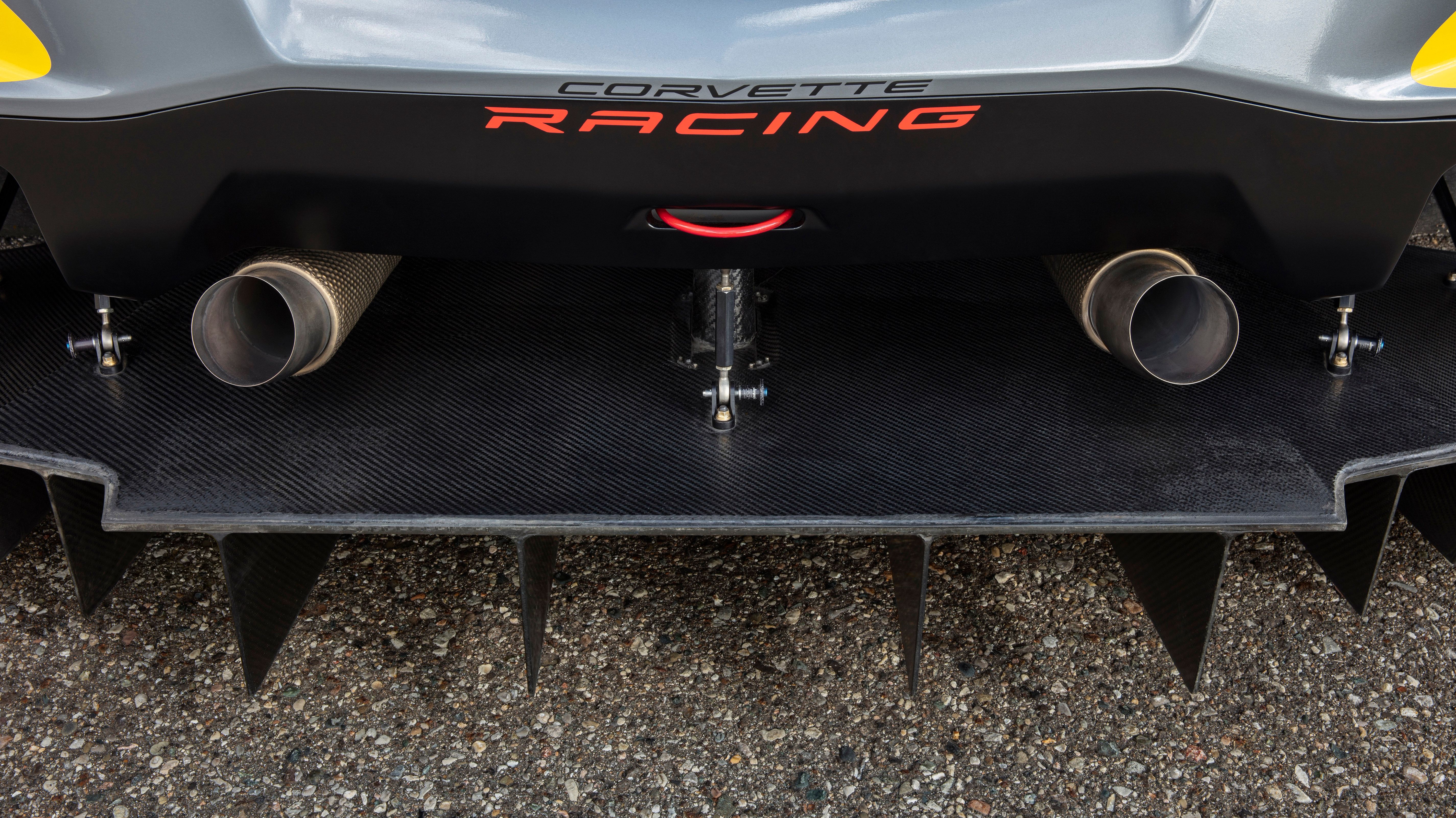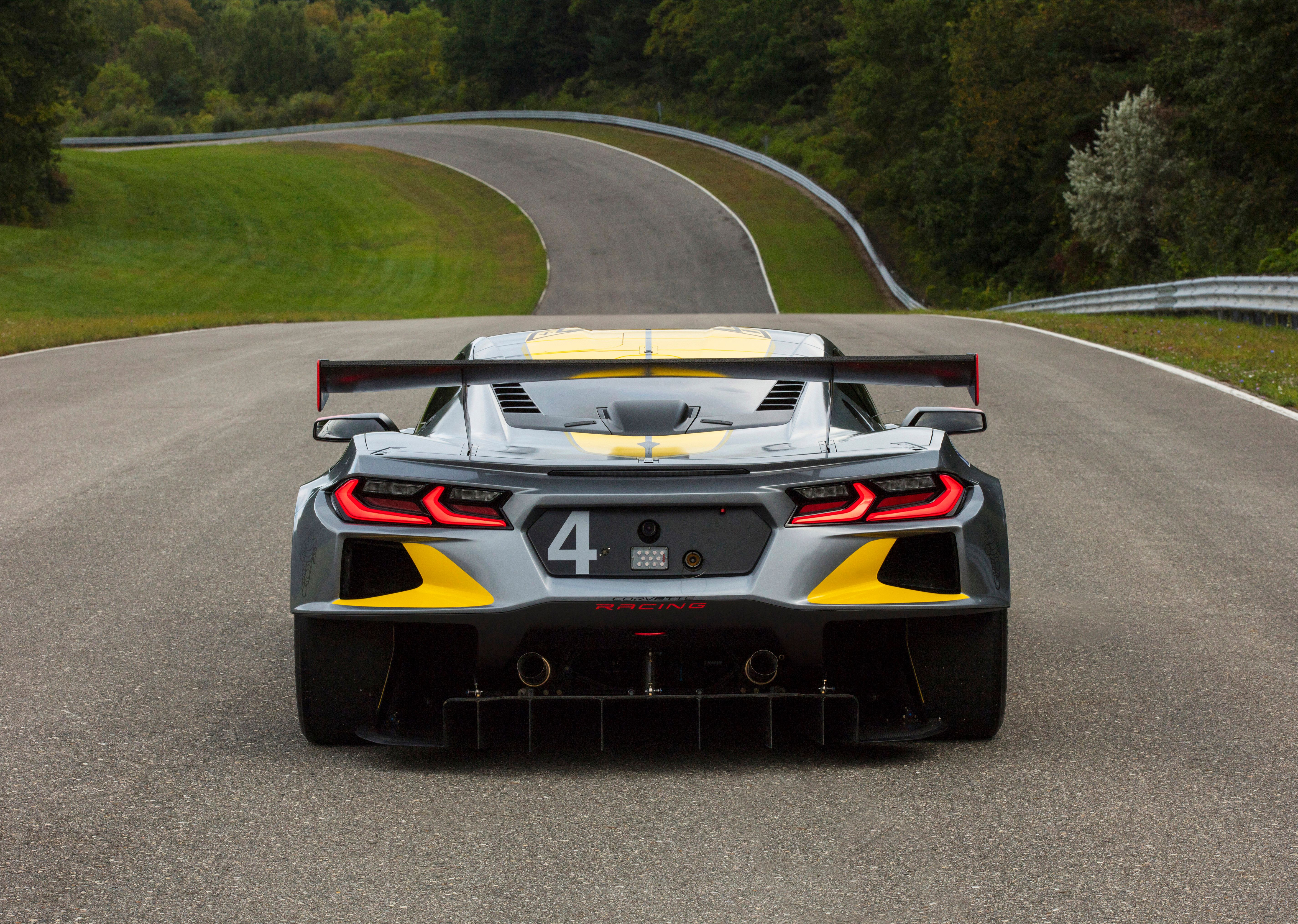The Chevrolet Corvette C8.R race car has arrived, and it is a doozy. The Corvette racer is all set to make its debut at the Rolex 24 at Daytona on January 25, 2020. But before it lays the smackdown on the race track, the Corvette C8.R takes its turn under the spotlight where it’s properly getting the attention it deserves. The Corvette C8.R isn’t just a race car; it also happens to be Chevrolet’s first-ever mid-engine race car to compete in IMSA’s GTLM class. It’s also Chevrolet’s first clean sheet race car design racer since the C5.R debuted in 1999. Through all these firsts, the Corvette C8.R racer takes its place as Chevrolet’s next warhorse, succeeding a race car — the Corvette CR.7 — that won 16 races in its time, including the 2015 24 Hours of Le Mans. Can the C8.R replicate that kind of success? Only time will tell. For now, let’s enjoy the fact that the C8.R is here, and it’s ready to stake its claim as the next great Corvette racer.
2020 Chevy Corvette C8.R Racing DNA
The Chevrolet Corvette C8.R is an important race car for Chevrolet. That’s a given. It’s important for all the reasons I mentioned, specifically as a history-making race car for the Bowtie. To say that there’s not a lot tied to C8.R is to underestimate the lineage of all Corvette race cars. In the end, though, the legacy of these racers won’t be determined by how shiny they look when they make their debuts. They won’t be determined by the plaudits thrown their way when they’re first unveiled. In the world of motor racing, results are the only thing that matters. So while we look at the Corvette C8.R now and marvel at its design, architecture, and potential, let’s push the brakes first on completely falling head over heels for it. As impressive as it looks, the CR.8 still has to prove itself. So, at this point, the more pertinent question is this: does the Chevrolet Corvette C8.R have the chops to be a successful race car?
At first glance, yes it does.
Granted, some of the features of the production model doesn’t apply to the race car. That includes the production model’s 6.2-liter LT2 V-8 engine. Make no mistake. This isn’t a competitive disadvantage for the C8.R. It’s part of a compliance program with the IMSA, specifically with the latter’s rules on engine displacements. As such, the C8.R is powered by a smaller 5.5-liter naturally aspirated V-8 engine that produces 500 horsepower and 480 pound-feet of torque.
Even more encouraging, the C8.R packs more power than its predecessor, the CR.7, despite using the same naturally aspirated V-8 unit. It’s not much of an increase — the CR.7’s V-8 engine produces 491 horsepower and 465 pound-feet of torque — but when you’re talking about these numbers from the prism of motor racing, these improvements could spell the difference between a title-winning race car and a mediocre one.
Aerodynamic qualities are critically important, too. Give credit to Chevrolet. It knows how important this aspect of the C8.R is, and it went to work in not only improving the race car’s aerodynamics, but also its stiffness and overall weight. All these were primary focuses on the development of the C8.R, and the results bear fruit.
The Corvette C8.R, for example, uses a modified version of the same chassis that underpins the 2020 Corvette Stingray C8. It’s been modified to meet racing series requirements, and the result of these modifications is a platform that has a lower center of gravity and more even weight distribution on the wheels than its predecessor.
Further reading
The Corvette C8.R Isn't The First Mid-Engined Racer With That Logo On The Hood
Read our full review on the 2020 Chevrolet C8 Corvette Stingray.
Read our speculative review of the 2020 Chevrolet Corvette Zora ZR1
Read our speculative review of the 2020 Chevrolet Corvette Zora Z06
Check out our full review of the 2014-2019 Chevy C7 Corvette
Read our full review on the 2014 Chevrolet Corvette C7.R.




